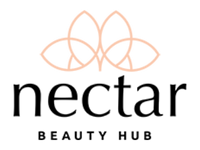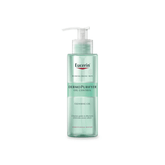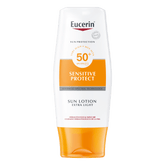Cradle cap in babies, how to care for their skin
Are you expecting your first child? Have you just had your first child? You’re now living in a new world, in which (we’ve all been there) you're plagued by doubts. One of the main ones will probably be how to care for your baby’s skin and the best products for doing so. Keep reading to find out!
Cradle cap in babies: treatment
Cradle cap doesn’t affect all babies, although it tends to appear between the second and tenth weeks of their life. It has nothing to do with their bed, it just tends to affect small babies when they are still sleeping in a cradle.
What is most important is that you don’t panic: this is a benign, inflammatory and common infection, that afflicts the scalp, but that can spread to their ears, forehead, and eyebrows. It is not itchy or contagious, despite its unpleasant appearance. It naturally disappears between the first and second year of their life, but with a few special skin care steps, you can get it in check in no time.
Cradle cap can be treated, it is just a case of following a few simple guidelines that will help it to fall out by itself. These include:
- Brushing your baby’s hair with a special baby brush. Be very careful not to irritate the skin or cause wounds.
- Don’t try to scratch the crusty patches with your nails, as this can irritate your baby’s scalp.
- Use a specific product that will help treat the crusty patches on your baby’s head, in addition to their forehead, eyebrows, and ears. Apply once a day.
- Enhance the effect of the specific product using a special shampoo to prevent the appearance of crusty patches. After applying the treatment, wash your baby’s hair with this shampoo, massaging smoothly and rinsing with plenty of warm water.
- Protect your baby’s skin, particularly this area, from damage caused by intense sunlight, cold or air and try to avoid excessive perspiration. This way, you can prevent irritation from getting any worse.
- Wash your hands with soap and warm water before and after applying this treatment to cradle cap.
Although your baby’s head is delicate, don’t be worried about damaging soft spots (fontanelles). Nor should you be worried about brushing or massaging the scalp, as neither of these actions will harm your baby.
Baby’s bath time
When cleaning your baby’s skin, bear in mind a few tips on bathing a new-born. Draw a bath at the perfect temperature: 37 degrees C. The water shouldn’t be too hot, or it will dry out your baby’s skin, and if it’s too cold your baby will be uncomfortable.
Use neutral soaps with ultra-delicate soap-free formulas that respect the sensitivity and fragility of a baby’s skin. Apply the soap by hand to avoid unnecessary friction. After 5 or 10 minutes in the bath, dry your baby carefully and moisturise them with a suitable product. Apply the moisturiser in a circular motion for a relaxing effect.
Take care when changing your baby’s nappy
A baby’s bottom spends lots of time in a damp, acidic environment, which is why ‘nappy rash’ is so common. When this happens, change the nappy as soon as it’s wet or dirty (and even if it’s not, it should be changed every 3 hours). Wash the area with water or a no-rinse cleansing gel. It’s extremely important to dry the area well and apply a protecting and repairing cream each time you change the nappy.
Indirect exposure to sun when out and about
As we’ve already mentioned, children under the age of 3 should never be directly exposed to the sun. But, UVA and UVB rays are present even in winter when it’s cloudy, so it’s important to protect the skin from what is called indirect exposure. This is the exposure you get from going for a walk or sitting under an umbrella or an awning.















